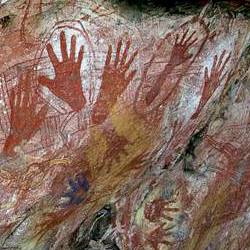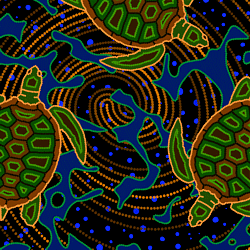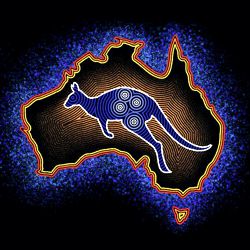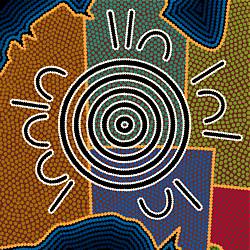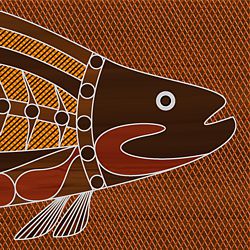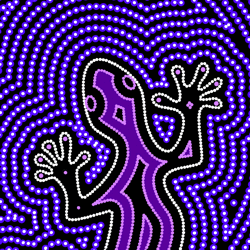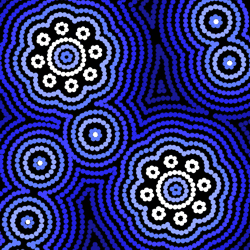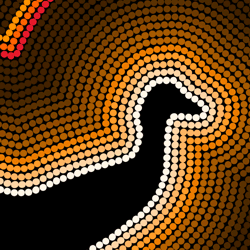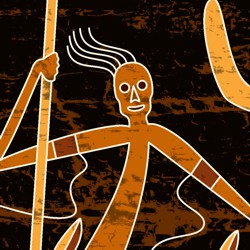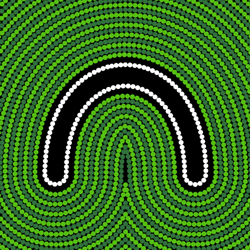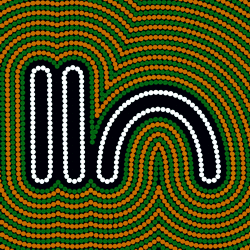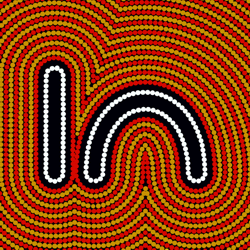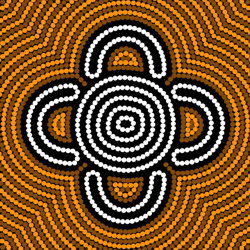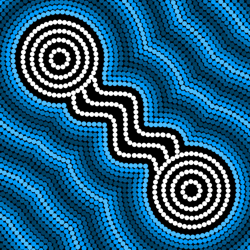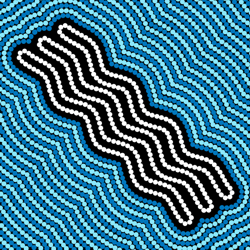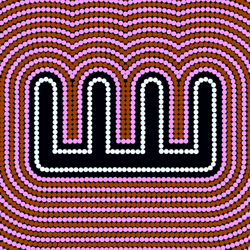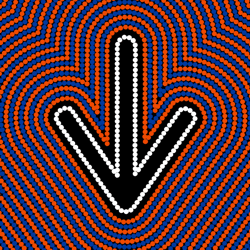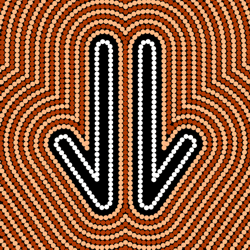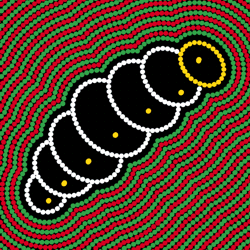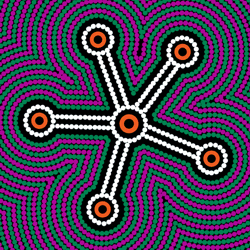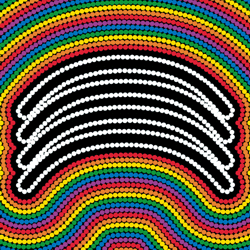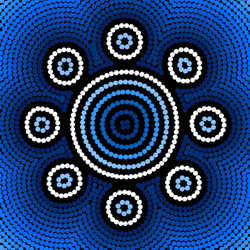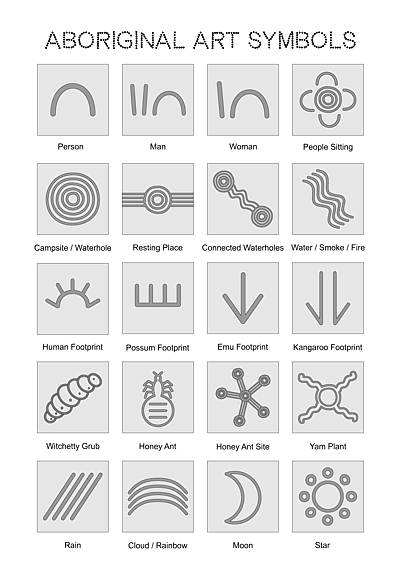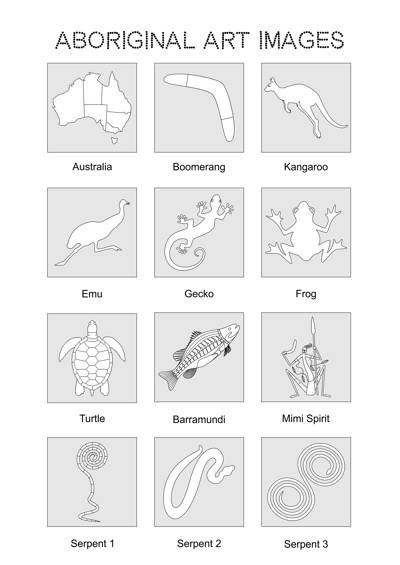Aboriginal Art - The Dreaming
The Dreaming is Aboriginal identity. It is the ongoing process of creation that unifies the past and present to determine the future.

'Rainbow Serpent Dreaming'
The ‘Dreamtime’ or ‘Dreaming’ are terms used to refer to Aboriginal cosmology and spirituality.
Which word is the most appropriate to use? They are both confusing definitions because no single word in the English language can express the complexity of Aboriginal culture. ‘Dreamtime’, which was first coined by the 19th century anthropologist Francis Gillen, is less accurate as it implies a fixed period of time. There is no word for time in the Aboriginal languages. ‘Dreaming’ is a slightly better term as it exists in the present and relates more to the perennial tradition of Aboriginal culture. Although it still lacks definition, ‘Dreaming’ is the preferable term to use.
'The Dreaming' is the mystical process of creation that is key to Aboriginal culture. It is the eternal life-force that unifies the past and present, merging both the physical and spiritual realms of existence.
However, the 'Dreaming' is not a unified belief system. As there are over 400 different Aboriginal groups across Australia with various languages and dialects, there are many different 'Dreamings' with their own distinct mythologies. What they have in common is their creation stories that establish a moral order, a respect for nature and a reverence for the ancestral spirits such as the Rainbow Serpent and the Mimi Spirits. It links the terrestrial and the celestial, the people and the land, religious and social laws, the spiritual forces which protect and sustain life and the stories that link all of these.
'The Dreaming' is continuously sustained through a visual tradition of art, stories, songs, ceremonies, memories and imaginings that have been passed down the generations by word of mouth for thousands of years.
“The reason that we tell these stories is to know where we’re coming from. Gives us an identity of the people. And if we know where we’re coming from, we know where we’re going. As long as we keep telling these stories we know that our culture is alive and running strong through our veins.”
Warren Foster. Wallaga Lake, New South Wales, 1998.
The Painting Process for our Page Illustration
Many of the topics in our Aboriginal Art pages are illustrated with a painting that was inspired by the theme of that page. For each of these we have created a step by step slide show that deconstructs the image to reveal the painting process and inspire possibilities for your own ideas. The images and symbols used to create our illustrations can be found in our menu at the foot of the page. They are available for you to download to help with creating your own artworks.
- aboriginal-art-dreaming-painting-13
Rainbow Serpent Dreaming
- aboriginal-art-dreaming-painting-2
1. The outline of the serpent is drawn with a white color pencil on a black ground.
- aboriginal-art-dreaming-painting-3
2. The concentric rings of Aboriginal campsite symbols are drawn within the spirals of the serpent’s body.
- aboriginal-art-dreaming-painting-4
3. The background is divided up into areas of different terrain.
- aboriginal-art-dreaming-painting-5
4. The campsite rings are outlined with bright green dots.
- aboriginal-art-dreaming-painting-6
5. The first area of terrain is colored with yellow ochre dots.
- aboriginal-art-dreaming-painting-7
6. The second area of terrain is colored with burnt sienna dots.
- aboriginal-art-dreaming-painting-8
7. The third area of terrain is colored with light blue dots.
- aboriginal-art-dreaming-painting-9
8. The fourth area of terrain is colored with sap green dots.
- aboriginal-art-dreaming-painting-10
9. A zig-zag pattern is drawn to represent the markings on the serpent's body.
- aboriginal-art-dreaming-painting-11
10. Alternate sections of the serpent's markings are colored with a deep red.
- aboriginal-art-dreaming-painting-12
11. The edges of the serpent's markings are outlined with the colors of the rainbow.
- aboriginal-art-dreaming-painting-13
12. The outline of the serpent's body is colored with a tinted yellow.

(Click on the play buttons or swipe back and forward to explore each stage of our painting.)
Key Stages of the Painting
-
The outline of the serpent is drawn with a white color pencil on a black ground.
-
The concentric rings of Aboriginal campsite symbols are drawn within the spirals of the serpent's body.
-
The background is divided up into areas of different terrain. [1]
-
The campsite rings are outlined with bright green dots.
-
The first area of terrain is colored with yellow ochre dots.
-
The second area of terrain is colored with burnt sienna dots.
-
The third area of terrain is colored with light blue dots.
-
The fourth area of terrain is colored with sap green dots.
-
A zig-zag pattern is drawn to represent the markings on the serpent's body.
-
Alternate sections of the serpent's markings are colored with a deep red.
-
The edges of the serpent's markings are outlined with the colors of the rainbow.
-
The outline of the serpent's body is colored with a tinted yellow.



